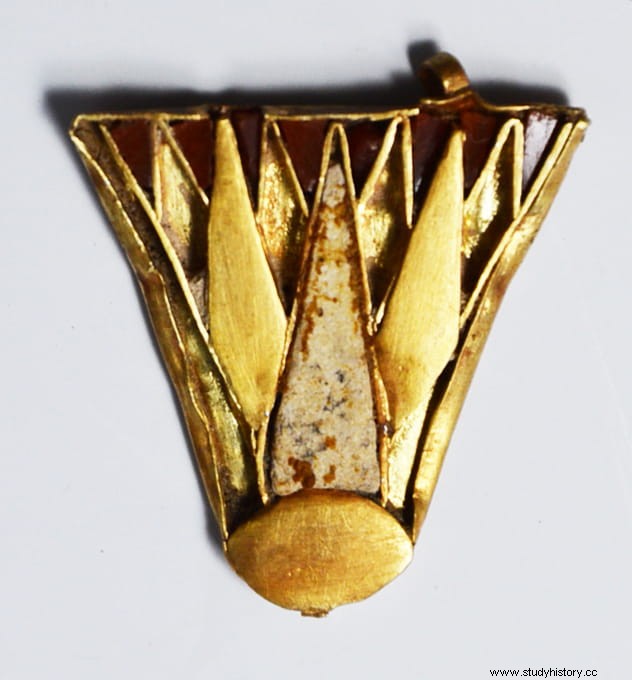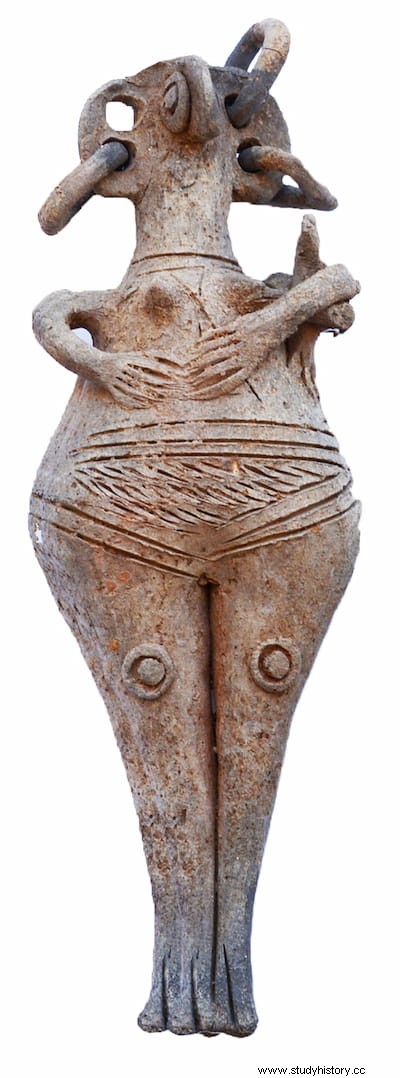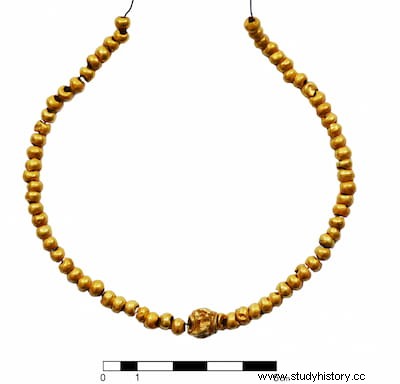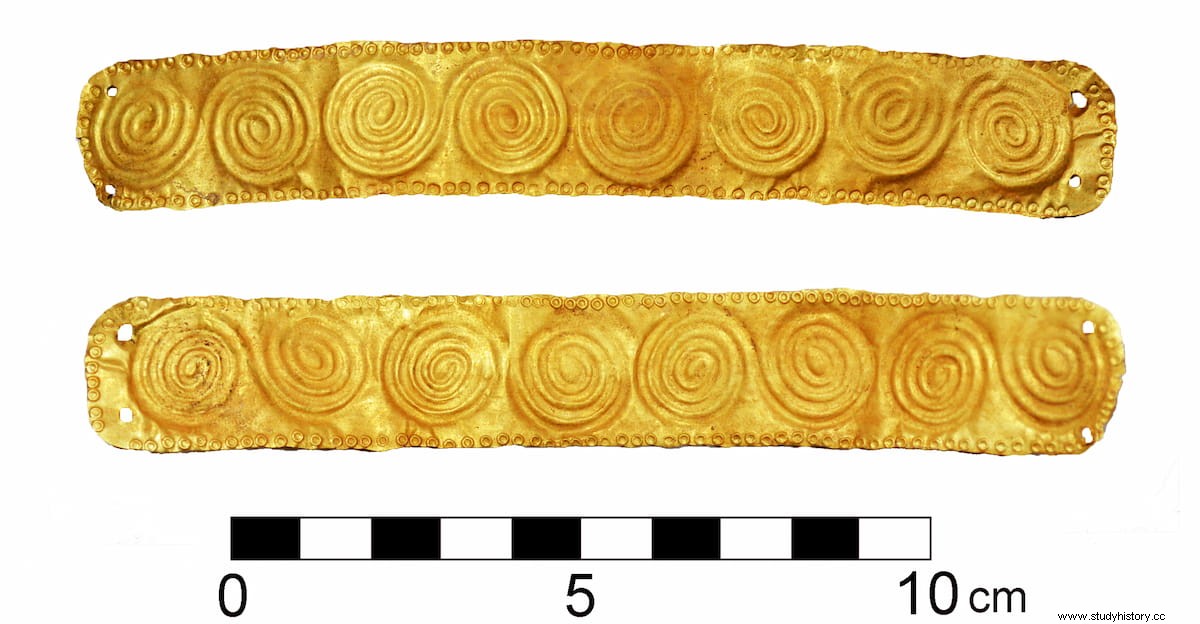Since 2010 the New Swedish Expedition (The Söderberg Expedition) has carried out several rounds of excavations in Cyprus. In 2018, archaeologists discovered two underground chamber tombs with a large number of human remains at Hala Sultan Tekke, a Bronze Age site that served as a burial ground for residents of the nearby coastal town of Dromolaxia Vizatzia. southeast of the island.
The management of the finds required a very delicate work for four years, since the bones were extremely fragile after more than 3,000 years in the saline soil.

In addition to the remains of 155 individuals, the team also found 500 objects. Bones and ritual burial objects were superimposed, showing that the tombs were used for several generations:The findings indicate that these are family tombs of the ruling elite of the city. For example, we found the skeleton of a five-year-old boy with a gold necklace, earrings and tiara. It was probably a child from a powerful and wealthy family , says Professor Peter Fischer, director of the excavations.
The finds include jewelry and other objects made of gold, silver, bronze, ivory, and precious stones, as well as richly decorated vessels from many cultures. We also found a ceramic bull. The body of this hollow bull has two openings:one in the back to fill it with a liquid, probably wine, and another in the nose to drink from. They apparently feasted in the chamber to honor their dead .

A particularly important find is a cylindrical-shaped seal made from the mineral hematite, with a cuneiform inscription from Mesopotamia that archaeologists were able to decipher. The text consists of three lines and mentions three names. One is Amurru, a god worshiped in Mesopotamia. The other two are historical kings, father and son, who we have recently been able to locate in other texts on clay tablets from the same period, that is, from the 18th century BC. We are currently trying to determine why the stamp ended up in Cyprus over 1,000 kilometers from where it was made .
Among the finds are the red gemstone carnelian, from India, the blue gemstone lapis lazuli, from Afghanistan, and amber, from around the Baltic Sea, showing that the city played a central role in the trade during the Bronze Age. The gold jewelry, along with the scarabs (scarab-shaped amulets with hieroglyphics) and the remains of fish imported from the Nile Valley, tell the story of the intense trade with Egypt.

By comparing with similar finds from Egypt, archaeologists were also able to date the jewelry. Comparisons show that most of the objects are from the time of Nefertiti and her husband Akhenaten, around 1350 BC. Like a gold pendant we found:a lotus flower encrusted with precious stones. Nefertiti wore similar jewelry .
Ceramic finds are also important. The way the pottery changed in appearance and material over time allows us to date it and study the connections these people had with the world around them. What fascinates me most is the extensive network of contacts they had 3,400 years ago .
The next step will be DNA analysis of the skeletons. This will reveal the kinship between the various individuals and whether there are immigrants from other cultures, which is not unlikely considering the extensive trade networks says Peter Fischer.

All objects from the excavation belong to Cyprus and are stored in museums in Nicosia and Larnaca. Some of the most important findings are already exposed. The site of the Age of. Hala Sultan Tekke Bronze is currently on the UNESCO list to be named a World Heritage Site.
